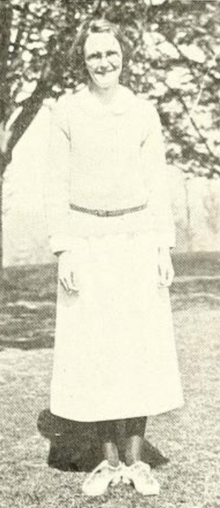|
Margaret Kennard
Margaret Alice Kennard (September 25, 1899—December 12, 1975)[1] was a neurologist who principally studied the effects of neurological damage on primates. Her work led to the creation of the Kennard Principle, which posits a negative linear relationship between age of a brain lesion and the outcome expectancy: in other words, that the earlier in life a brain lesion occurs, the more likely it is for some compensation mechanism to reverse at least some of the lesion's bad effects.[1] BiographyKennard's father was a notable landscape architect and naturalist;[2] her paternal grandparents were the businessman and abolitionist Martin Kennard and the naturalist and women's rights activist Caroline Smith Kennard.[3] Kennard graduated from Bryn Mawr College in 1922.[4] She earned a Rockefeller Traveling Fellowship for study in Western Europe from 1934 to 1936.[5] She also studied the effects of stimulants and cortical depressants on monkeys with brain damage.[5] Kennard Principle The observation that young brains reorganize more effectively than adult brains was first articulated by Kennard in 1936. Consequently, the notion that how well a brain can reorganize itself after damage as a function of the developmental stage is now known as the "Kennard principle".[6] This research led to one of the earliest experimental evidence for age effects on neuroplasticity. She worked closely with John Fulton in her famous infant brain studies. References
External links |
||||||||||||
Portal di Ensiklopedia Dunia
